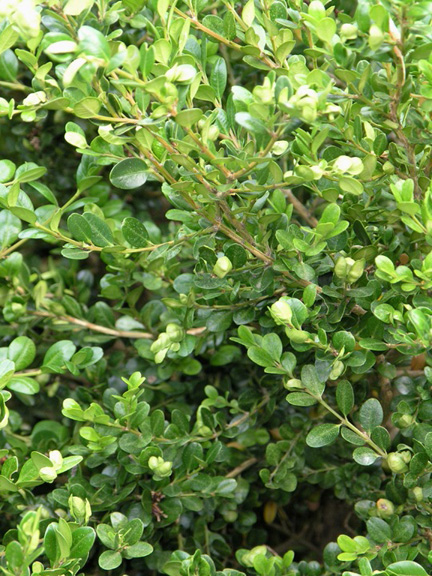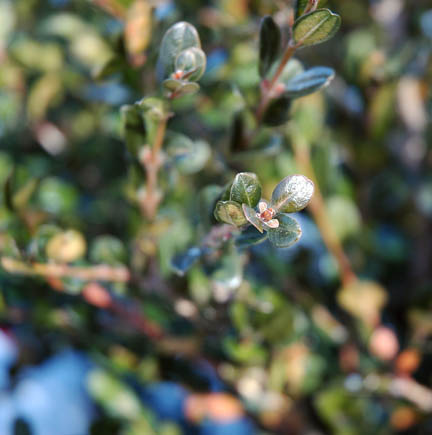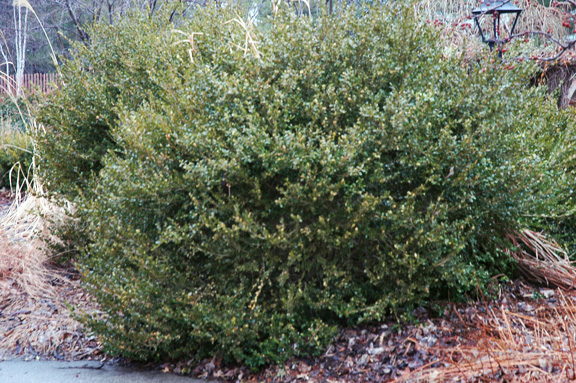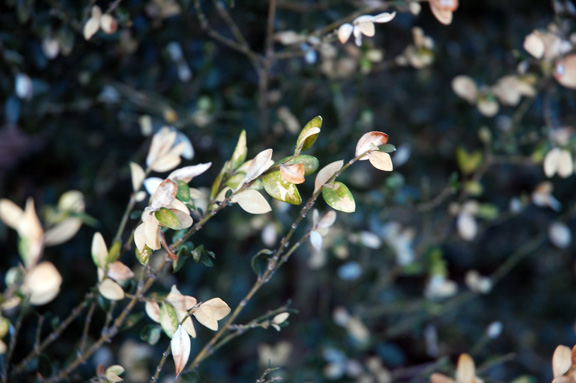
Woody > Buxus > Buxus microphylla > Buxus microphylla 'Winter Beauty'
Buxus microphylla
'Winter Beauty'
Winter Beauty Boxwood
Mike's
Opinion


"
Another excellent plant that can be used in the garden in place of the static junipers. I have had some problems with winter burn on newly planted shrubs, but this seems to have passed on the more established ones. Not one of my favourite boxwoods but still it has enough variation to make it an interesting addition to the winter garden. Be cautious of winter snow build-up on it as it can damage the plant.
Michael Pascoe, NDP., ODH., CLT., MSc. (Plant Conservation)
"
| Family |
| Buxaceae |
| Genus |
| Buxus |
| Species |
| microphylla |
| Cultivar |
| 'Winter Beauty' |
| Category |
| Woody |
| Type |
| Shrub (evergreen) |
| Pronunciation |
| USDA Hardiness Zone |
| 6 - 9 |
| Canadian Hardiness Zone |
| 5 |
| RHS Hardiness Zone |
| H7 |
| Temperature (°C) |
| -23 - (-29) |
| Temperature (°F) |
| -10 - (-15) |
| Height |
| 2 m |
| Spread |
| 1 m |
Photographs
Description and Growing Information
Flowering Period
| General Description |
| A medium sized evergreen shrub with an open habit. The leaves are quite broad, obovate and very glossy, almost shiney; hence the name Winter Beauty. |
| Cultivation |
| Easy to grow on most soil types but prefers rich garden loams and heavy soils. Full sun or light shade, protect from drying winds. |
| Shape |
| Loosely rounded |
| Growth |
| Slow |
| ID Characteristic |
| Broad glossy leaves on a rather open plant. |
| Pests |
| Spider mites may be an occasional problem in hot summers. As of late Boxwood blight has become a major problem both in Europe and most of North America. The fungus Cylindrocladium buxicola causes leaf spots, defoliation and even extensive die-back. The disease can be spread by water splash, tools and footwear and can survive for up to six years in the soil. It thrives in moist, humid environments but is killed when exposed to temperatures in excess of 33 °C for at least a week. The disease also affects Pachysandra, Sarocococca and Buxus balearica, sinica, macowanii, microphylla, bodinieri, glomerata, harlandii, sempervirens and riparia. |
| Habitat |
| Horticultural origin. |
| Bark/Stem Description |
| Slightly rough, pale grey to light beige in colour. |
| Flower/Leaf Bud Description |
| Small, solitary, sessile, ovoid with 1-2 pairs of visible scales. |
| Leaf Description |
| Obovate, 1-2cm across, shiny dark green above, pale dull green beneath. |
| Flower Description |
| Yellow, cream, fragrant but somewhat insignificant. As with most boxwood, bees are attracted to the blooms. |
| Fruit Description |
| Three celled capsule, each valve 2 horned, shiney black seed. |
| Colour Description |
| Dark green in winter. |
| Texture Description |
| Medium |
| Notable Specimens |
| The A.M. Cuddy Gardens, Strathroy, Ontario, Canada. |
| Propagation |
| Propagate in mid-summer by taking semi-ripe cuttings from the current season's growth. Collect in the early morning using a sharp knife to cut pieces 10 - 15 cm in length. Remove all leaves from the lower third and pinch out any soft terminal growth. Dip into a number 2 rooting hormone, insert into trays or pots of cutting compost (50/50 mix of compost and sharp sand or perlite) and water well. Place in a propagator with bottom heat set at 15°C with or without mist; rooting should occur in 4 - 6 weeks. |



